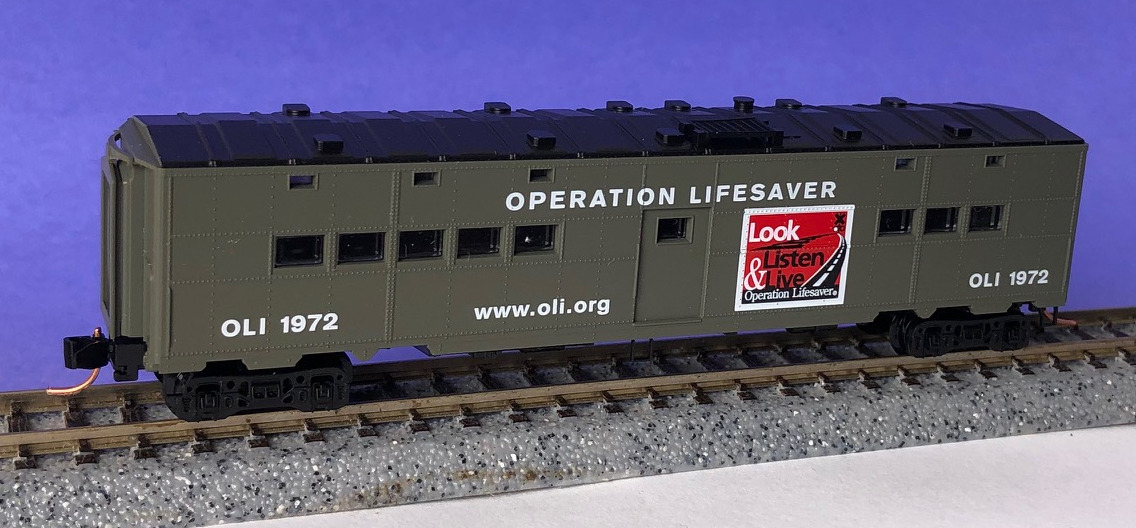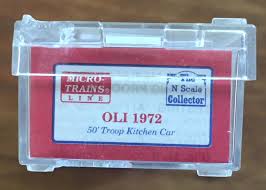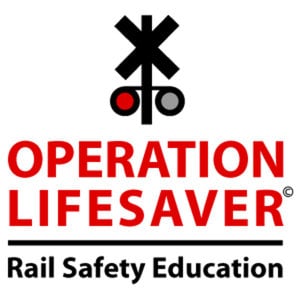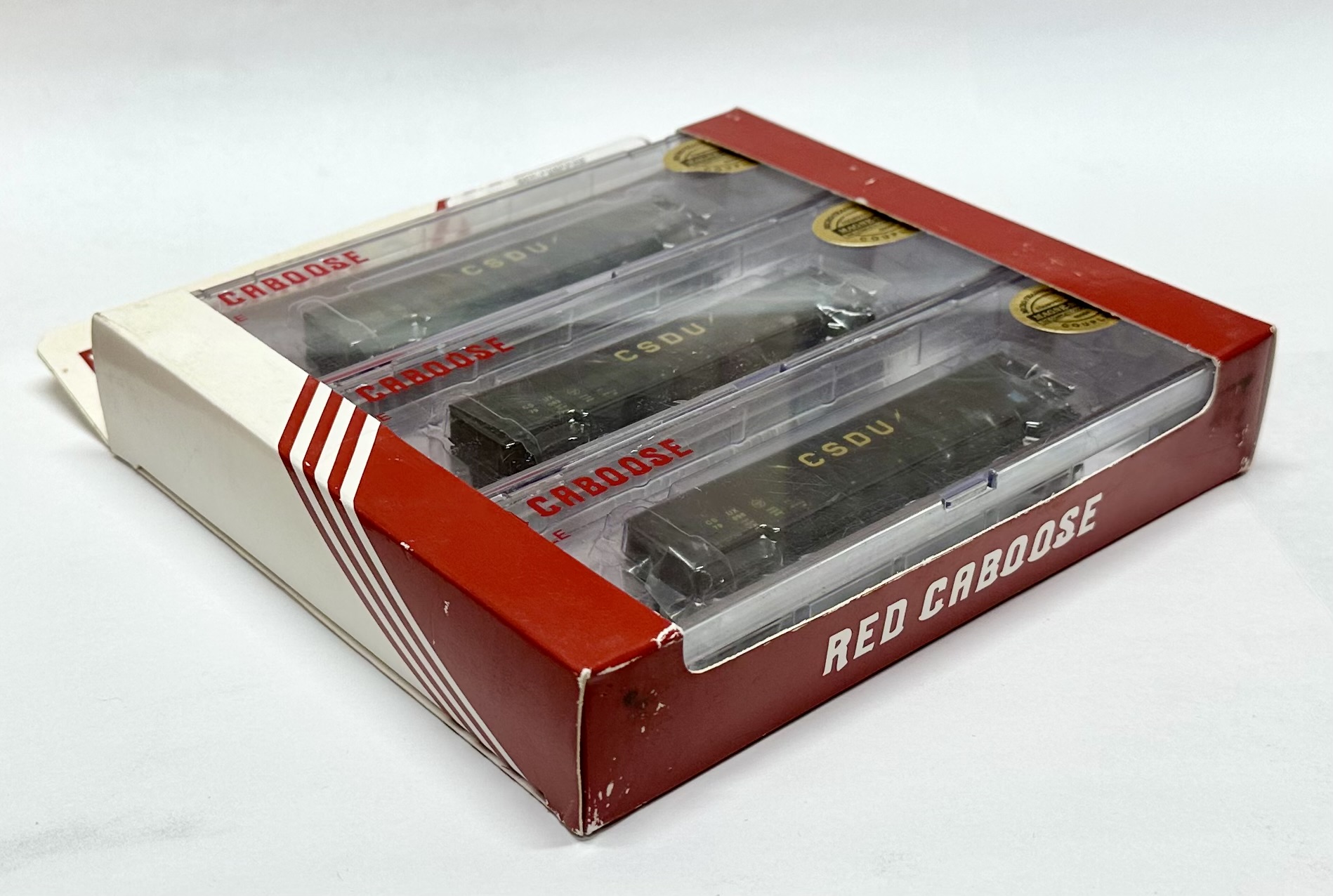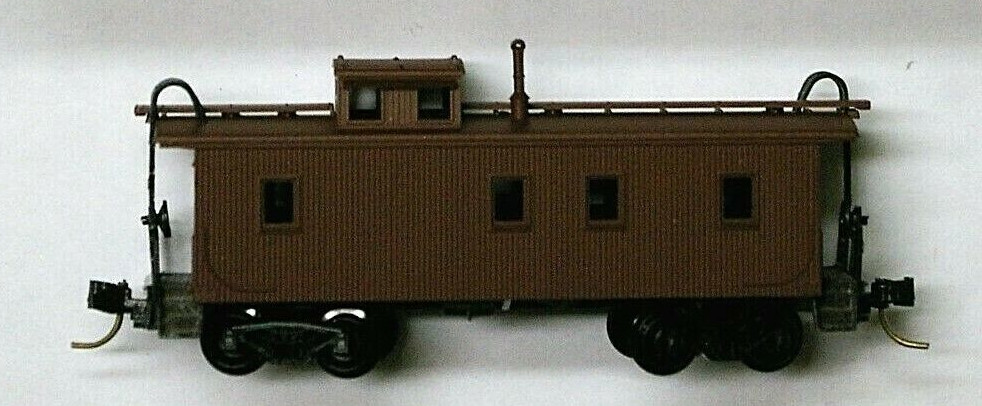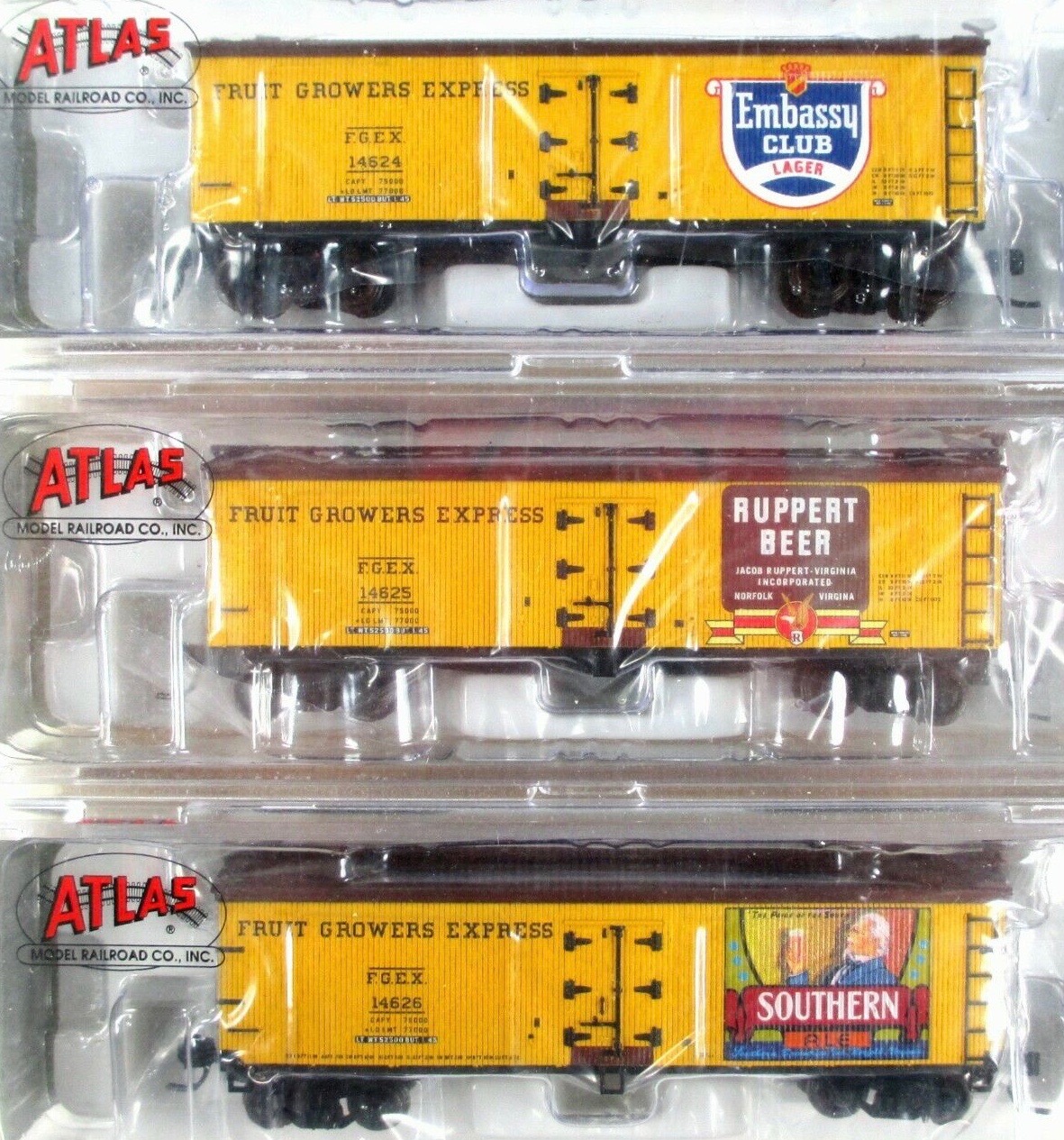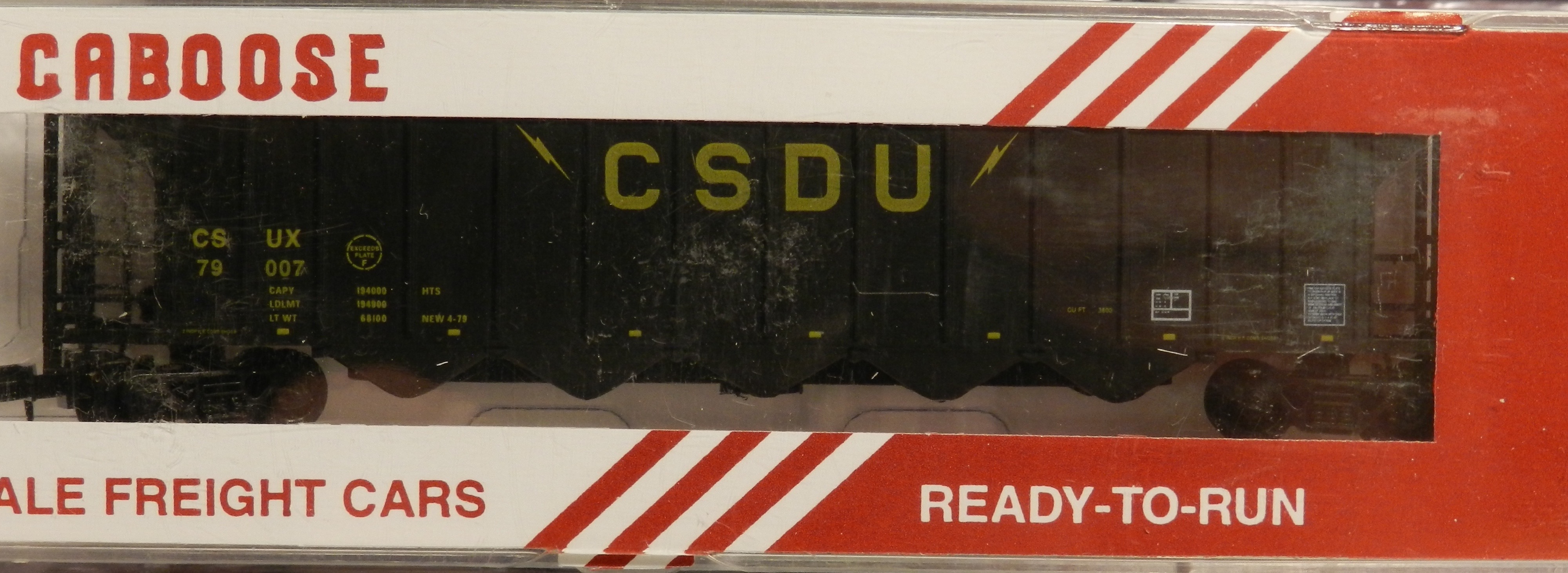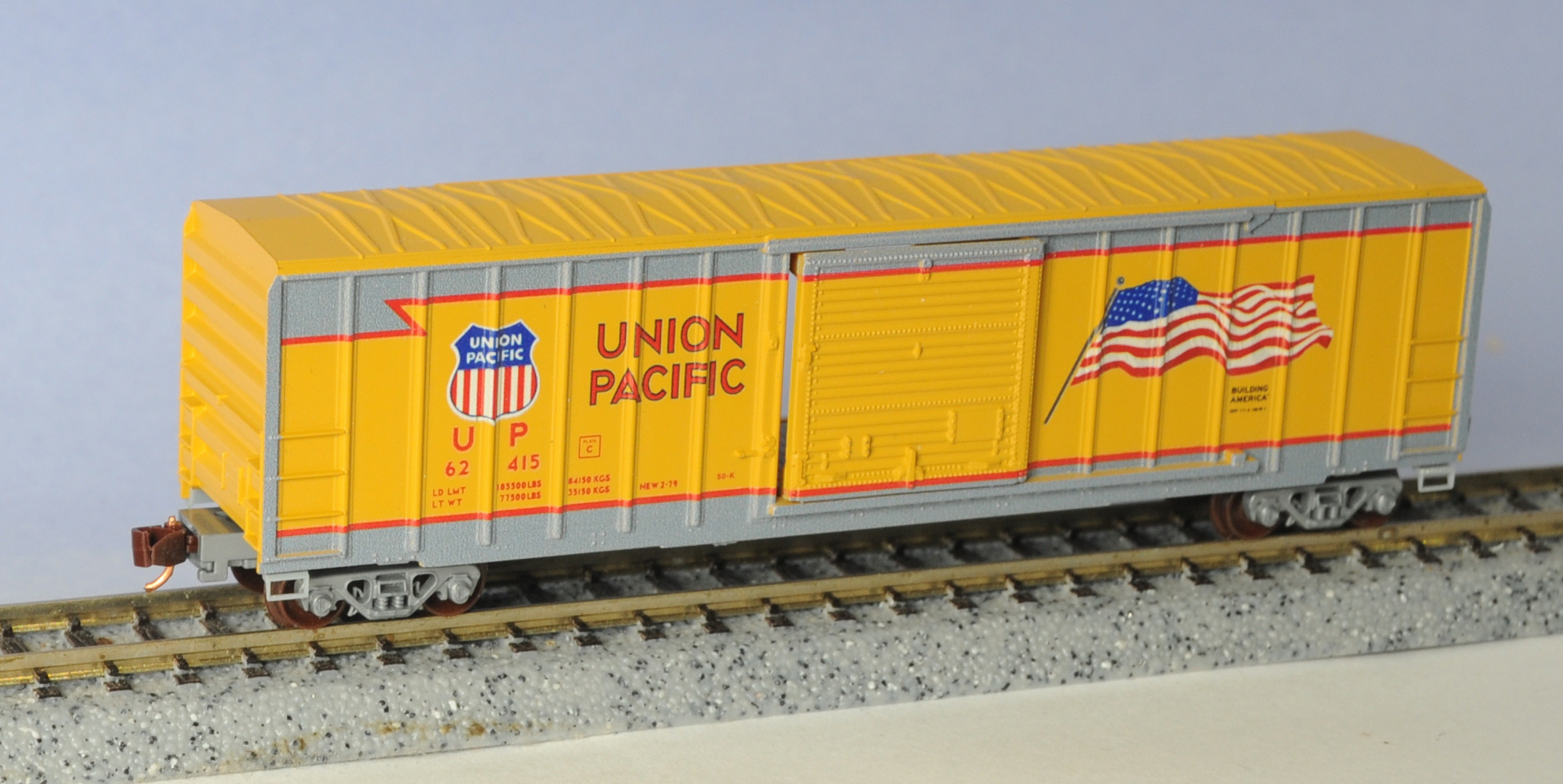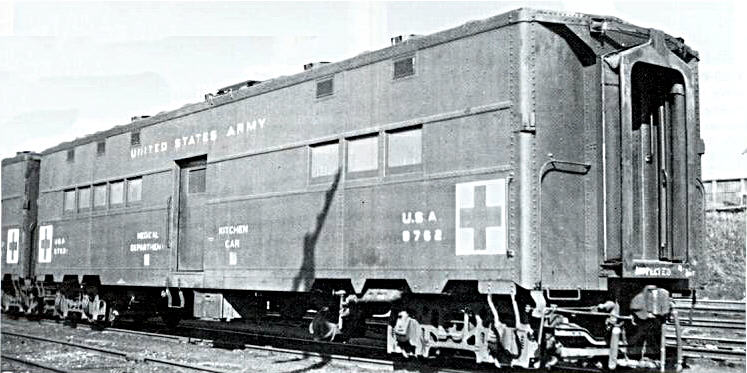Specific Item Information: N Scale Enthusiast (formerly N Scale Collector) fifth annual membership car. Not available for sale.
Prototype History: During World War II, the U.S. government relied on America’s extensive railway system to move the millions of enlisted personnel (close to 44 million armed services personnel traveled via U.S. railroads from December 1942 to June 1945) across the country to and from various bases and assignments. This form of transportation was the most practical given the gasoline rationing, the lack of an interstate highway system and only a few readily available passenger air crafts.
Although pragmatic, this mode of transportation did not come without its challenges. In December 1941, when the U.S. entered the war after Japan’s attack on Pearl Harbor, the number of existing standard railway passenger cars was not nearly enough to haul the huge numbers of personnel and materials needed to support the war effort. As a result, the U.S. Office of Defense Transportation (created to ensure that all national transportation priorities were fulfilled), requisitioned the Pullman-Standard Car Manufacturing Company and the American Car & Foundry to build hybrid troop cars.
The Pullman-Standard Car Manufacturing Company produced 2,400 troop sleepers (a mobile barracks) and 10 kitchen cars, while American Car & Foundry built 440 kitchen cars and 200 hospital cars. These trains were vital to the country’s war effort. For instance, in 1944, considered the peak war year, 97% of military passengers traveled by rail.
In effort to create as many troop cars as quickly and efficiently as possible, these rolling stock were manufactured based on standard Association of American Railroads 50’ 6” single–sheathed steel boxcars. Made entirely of steel, with heavily reinforced ends, troop cars utilized existing design elements, fixtures, manufacturing lines, materials and production equipment. They featured the following: Allied Full Cushion high-speed swing motion trucks, light-weight passenger car-like flat ends and doors, freight car-like floors, roofs, and sides, a row of windows, and a centered door along each body side.
Troop sleeper cars were painted olive drab with "Pullman" lettered in gold above the center door. Although owned by the government, troop sleepers were managed by Pullman and staffed with company-employed Pullman Porters. Each sleeper could accommodate 29 military personnel (with bunk beds stacked 3-high) and a Pullman porter.
Although pragmatic, this mode of transportation did not come without its challenges. In December 1941, when the U.S. entered the war after Japan’s attack on Pearl Harbor, the number of existing standard railway passenger cars was not nearly enough to haul the huge numbers of personnel and materials needed to support the war effort. As a result, the U.S. Office of Defense Transportation (created to ensure that all national transportation priorities were fulfilled), requisitioned the Pullman-Standard Car Manufacturing Company and the American Car & Foundry to build hybrid troop cars.
The Pullman-Standard Car Manufacturing Company produced 2,400 troop sleepers (a mobile barracks) and 10 kitchen cars, while American Car & Foundry built 440 kitchen cars and 200 hospital cars. These trains were vital to the country’s war effort. For instance, in 1944, considered the peak war year, 97% of military passengers traveled by rail.
In effort to create as many troop cars as quickly and efficiently as possible, these rolling stock were manufactured based on standard Association of American Railroads 50’ 6” single–sheathed steel boxcars. Made entirely of steel, with heavily reinforced ends, troop cars utilized existing design elements, fixtures, manufacturing lines, materials and production equipment. They featured the following: Allied Full Cushion high-speed swing motion trucks, light-weight passenger car-like flat ends and doors, freight car-like floors, roofs, and sides, a row of windows, and a centered door along each body side.
Troop sleeper cars were painted olive drab with "Pullman" lettered in gold above the center door. Although owned by the government, troop sleepers were managed by Pullman and staffed with company-employed Pullman Porters. Each sleeper could accommodate 29 military personnel (with bunk beds stacked 3-high) and a Pullman porter.
Road Name History:
Mission
Operation Lifesaver is a nonprofit public safety education and awareness organization dedicated to reducing collisions, fatalities and injuries at highway-rail crossings and trespassing on or near railroad tracks.
Vision
To be the recognized leader in providing the public with rail safety education and ending death and injuries due to trespassing and collisions on the tracks.
History
We started in 1972 when the average number of collisions at U.S. highway-rail grade crossings had risen above 12,000 incidents annually. To address this, the Idaho governor's office, along with the Idaho Peace Officers and Union Pacific Railroad launched a six-week public awareness educational campaign called Operation Lifesaver to promote highway-rail grade crossing safety. After Idaho's crossing-related fatalities fell that year by 43%, the successful program was adopted by Nebraska (1973) and Kansas and Georgia the following year. Within a decade it had spread around the country; in 1986 a non-profit national Operation Lifesaver office was created to help support the efforts of state OL programs and raise national awareness on highway-rail grade crossing issues.
Today Operation Lifesaver's network of authorized volunteer speakers and trained instructors offer free rail safety education programs across the U.S. We speak to school groups, driver education classes, community audiences, professional drivers, law enforcement officers, and emergency responders. Our programs are co-sponsored by federal, state and local government agencies, highway safety organizations and America's railroads. Together we promote the three E's - education, enforcement and engineering - to keep people safe around the tracks and railway crossings within our communities.
Canada
Operation Lifesaver is also present in Canada. In Canadian French, it is called Opération Gareautrain that literally reads Watch your train (Gare au train).
Mission
Operation Lifesaver is a nonprofit public safety education and awareness organization dedicated to reducing collisions, fatalities and injuries at highway-rail crossings and trespassing on or near railroad tracks.
Vision
To be the recognized leader in providing the public with rail safety education and ending death and injuries due to trespassing and collisions on the tracks.
History
We started in 1972 when the average number of collisions at U.S. highway-rail grade crossings had risen above 12,000 incidents annually. To address this, the Idaho governor's office, along with the Idaho Peace Officers and Union Pacific Railroad launched a six-week public awareness educational campaign called Operation Lifesaver to promote highway-rail grade crossing safety. After Idaho's crossing-related fatalities fell that year by 43%, the successful program was adopted by Nebraska (1973) and Kansas and Georgia the following year. Within a decade it had spread around the country; in 1986 a non-profit national Operation Lifesaver office was created to help support the efforts of state OL programs and raise national awareness on highway-rail grade crossing issues.
Today Operation Lifesaver's network of authorized volunteer speakers and trained instructors offer free rail safety education programs across the U.S. We speak to school groups, driver education classes, community audiences, professional drivers, law enforcement officers, and emergency responders. Our programs are co-sponsored by federal, state and local government agencies, highway safety organizations and America's railroads. Together we promote the three E's - education, enforcement and engineering - to keep people safe around the tracks and railway crossings within our communities.
Canada
Operation Lifesaver is also present in Canada. In Canadian French, it is called Opération Gareautrain that literally reads Watch your train (Gare au train).
Brand/Importer Information: Micro-Trains is the brand name used by both Kadee Quality Products and Micro-Trains Line. For a history of the relationship between the brand and the two companies, please consult our Micro-Trains Collector's Guide.
Manufacturer Information:  Micro-Trains Line split off from Kadee Quality Products in 1990. Kadee Quality Products originally got involved in N-Scale by producing a scaled-down version of their successful HO Magne-Matic knuckle coupler system. This coupler was superior to the ubiquitous 'Rapido' style coupler due to two primary factors: superior realistic appearance and the ability to automatically uncouple when stopped over a magnet embedded in a section of track. The success of these couplers in N-Scale quickly translated to the production of trucks, wheels and in 1972 a release of ready-to-run box cars.
Micro-Trains Line split off from Kadee Quality Products in 1990. Kadee Quality Products originally got involved in N-Scale by producing a scaled-down version of their successful HO Magne-Matic knuckle coupler system. This coupler was superior to the ubiquitous 'Rapido' style coupler due to two primary factors: superior realistic appearance and the ability to automatically uncouple when stopped over a magnet embedded in a section of track. The success of these couplers in N-Scale quickly translated to the production of trucks, wheels and in 1972 a release of ready-to-run box cars.
Micro-Trains Line Co. split off from Kadee in 1990 to form a completely independent company. For this reason, products from this company can appear with labels from both enterprises. Due to the nature of production idiosyncrasies and various random factors, the rolling stock from Micro-Trains can have all sorts of interesting variations in both their packaging as well as the products themselves. When acquiring an MTL product it is very important to understand these important production variations that can greatly enhance (or decrease) the value of your purchase.
Please consult our Micro-Trains Collector's Guide

Micro-Trains Line Co. split off from Kadee in 1990 to form a completely independent company. For this reason, products from this company can appear with labels from both enterprises. Due to the nature of production idiosyncrasies and various random factors, the rolling stock from Micro-Trains can have all sorts of interesting variations in both their packaging as well as the products themselves. When acquiring an MTL product it is very important to understand these important production variations that can greatly enhance (or decrease) the value of your purchase.
Please consult our Micro-Trains Collector's Guide
Item created by: nscalemodeler160 on 2016-04-07 05:18:37. Last edited by gdm on 2021-01-14 09:37:05
If you see errors or missing data in this entry, please feel free to log in and edit it. Anyone with a Gmail account can log in instantly.
If you see errors or missing data in this entry, please feel free to log in and edit it. Anyone with a Gmail account can log in instantly.


